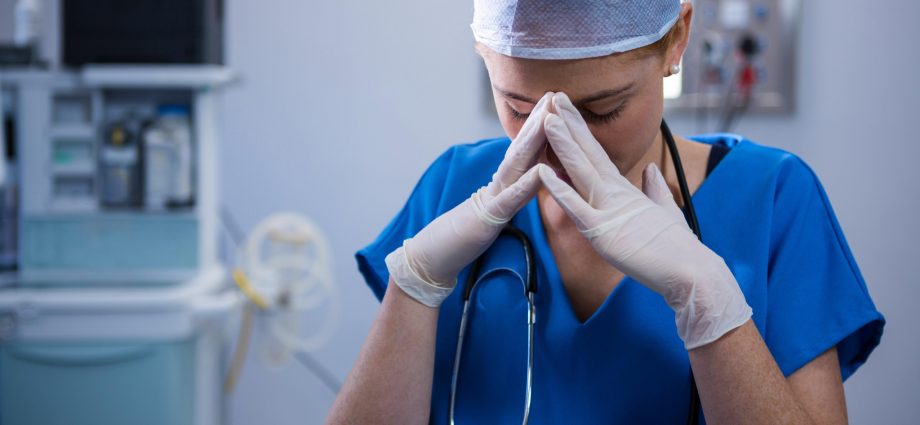WEDNESDAY, Oct. 25, 2023 (HealthDay News) — Health workers are experiencing ever-increasing levels of harassment and burnout in the wake of the pandemic, a new federal survey has found.
Reports of harassment on the job more than doubled during the pandemic years, and nearly half of health care workers often experience feelings of burnout, according to survey results published Oct. 24 in a new Vital Signs report from the U.S. Centers for Disease Control and Prevention.
The survey is the first to describe in detail the mental health crisis among health care workers that first developed during the pandemic, federal officials said.
“To label our current and longstanding challenge a crisis is an understatement,” said study senior author Dr. Casey Chosewood, director of the Office for Total Worker Health at the CDC’s National Institute for Occupational Safety and Health (NIOSH).
“Many of our nation’s health care systems are at their breaking point,” Chosewood continued. “Staffing crises, lack of supportive leadership, long hours of work, and excessive demands and inflexibility in our nation’s health systems all must be addressed. We’re calling on employers to take this information to heart and take immediate preventive action.”
The findings came from a survey on workplace quality that’s conducted on a regular basis by NIOSH.
More than 13% of health workers said they had been harassed at work in 2022, compared with 6% in 2018 — before the pandemic struck, the survey found.
Acts of harassment include threats, bullying and verbal abuse from either patients or coworkers, contributing to a hostile work environment, officials said.
“Notably, health workers reported the largest increase in being harassed at work compared to other workers,” Chosewood said. “And sadly, this report points out that health workers who reported being harassed were more likely to report symptoms of anxiety, depression and burnout compared to health workers who did not report being harassed.”
About 46% of health care workers said they experience feelings of burnout often or very often, with one in five (19%) saying they feel burned out very often, the results showed.
That’s “an increase from 32% in 2018,” Chosewood noted.
Health workers reported 4.5 days of poor mental health, on average, during the previous month in 2022, up from 3.3 days in 2018.
“Intentions by health workers to change jobs also increased, with 44% in 2022 reporting they were likely or very likely to look for a new job in the next year,” Chosewood said. “By comparison, other worker groups reported a decrease in job turnover intention.”
The survey also zeroed in on what’s contributing to burnout.
Workers had a reduced risk of burnout if they trusted management (60% lower), had a supervisor assisting them (74% lower), had enough time to complete work (67% lower), or felt that their workplace supported productivity (62% lower).
On the other hand, harassment at work quintupled a worker’s risk of anxiety or burnout and more than tripled the risk of depression.
In response, NIOSH is launching a national Health Worker Mental Health Initiative, said Dr. Debra Houry, the CDC’s chief medical officer.
“As part of this initiative, this fall NIOSH will be launching a national campaign for hospital leaders, focusing on providing them resources to help them think differently about how to identify and remove barriers to health worker well-being,” Houry said.
The survey results revealed tactics that hospital leadership can take to support workers, Houry said.
“For example, they can allow health workers to participate in decision-making on how the work is done and what aspects of the work should be targeted for improvement. This builds trust in management,” Houry said.
“Supervisors can provide assistance with accomplishing job tasks and ensure workers have enough time to complete their work,” she added.
“Health workers dedicate themselves to caring for us, our families and our communities, and they are pouring from an empty cup,” Houry said. “By improving work conditions and work design, we can have a positive impact on health worker well-being and mental health, and retain a critical asset to the nation’s health system and public health.”
More information
The U.S. Surgeon General has more about health worker burnout.
SOURCES: Oct. 24, 2023, media briefing with: Casey Chosewood, MD, MPH, director, Office for Total Worker Health, National Institute for Occupational Safety and Health; Debra Houry, MD, MPH, chief medical officer, U.S. Centers for Disease Control and Prevention; Vital Signs, Oct. 24, 2023
Copyright © 2025 HealthDay. All rights reserved.

